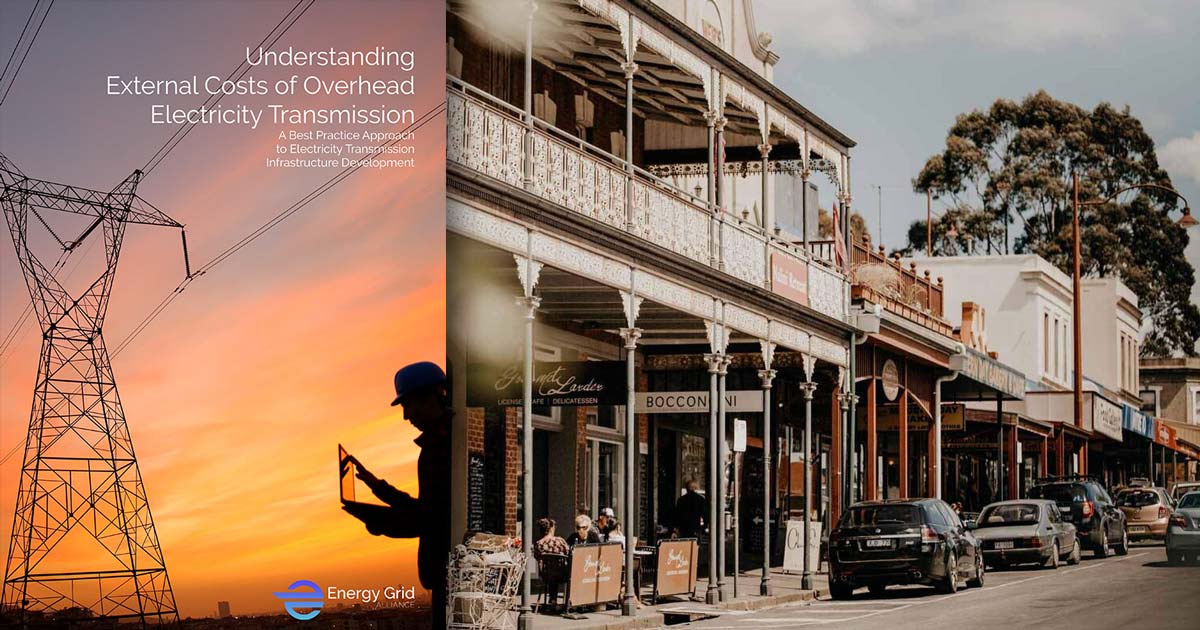Understanding External Costs of Overhead Electricity Transmission

Overhead electricity transmission infrastructure has potential to cause a wide range of social, environmental, and economic impacts, which are currently not integrated into cost-benefit mechanisms in Australia such as the Regulatory Investment Test for Transmission (RIT-T) or Integrated System Plan (ISP).
Social, environmental, and economic costs are therefore referred to as externalities or external costs.
External costs should be considered in transmission planning to rebalance the true benefits, this will lead to greater market efficiency and environmental sustainability. The evaluation of the external costs could be of great help during the cost-benefit analysis, allowing the negative impacts to be considered in the process to identify the optimal transmission development path. This could be achieved through new planning tools, such as a Strategic Land Use Assessment (SLUA), Multi-Criteria Analysis (MCA) and Economic Impact Assessment (EIA) some of which are currently being proposed by the Victorian government under its proposed Victorian Transmission Investment Framework (VTIF).
In economic terms the first step is, therefore, the quantification of economic externalities. Cumulative environmental effects, when valuated in economic terms, lead to high values and cannot be neglected in decision making processes.
International best-practice indicates that route selection should always seeks to avoid impacts (external costs) in the first instance. This is often achieved by routing new transmission line developments along existing easements, utility corridors and rights of way. The routing and siting of transmission infrastructure should always seek to avoid areas of high ecological, cultural, social, economic, and aesthetic value.
While external costs will vary for each project, a summary of potential economic impacts from planning, construction, operation, maintenance, emergency repairs and long-term operation associated has been provided. These represent direct and indirect economic disbenefits that should be explored and understood and considered in any cost-benefit analysis. It is important that flow through effects are also considered to appreciate the broader economic impacts.
The purpose of this paper is to explore potential externalities that could be considered when determining the optimal transmission path with the least economic impact. Recommendations are by no means exhaustive and will vary from project to project.

